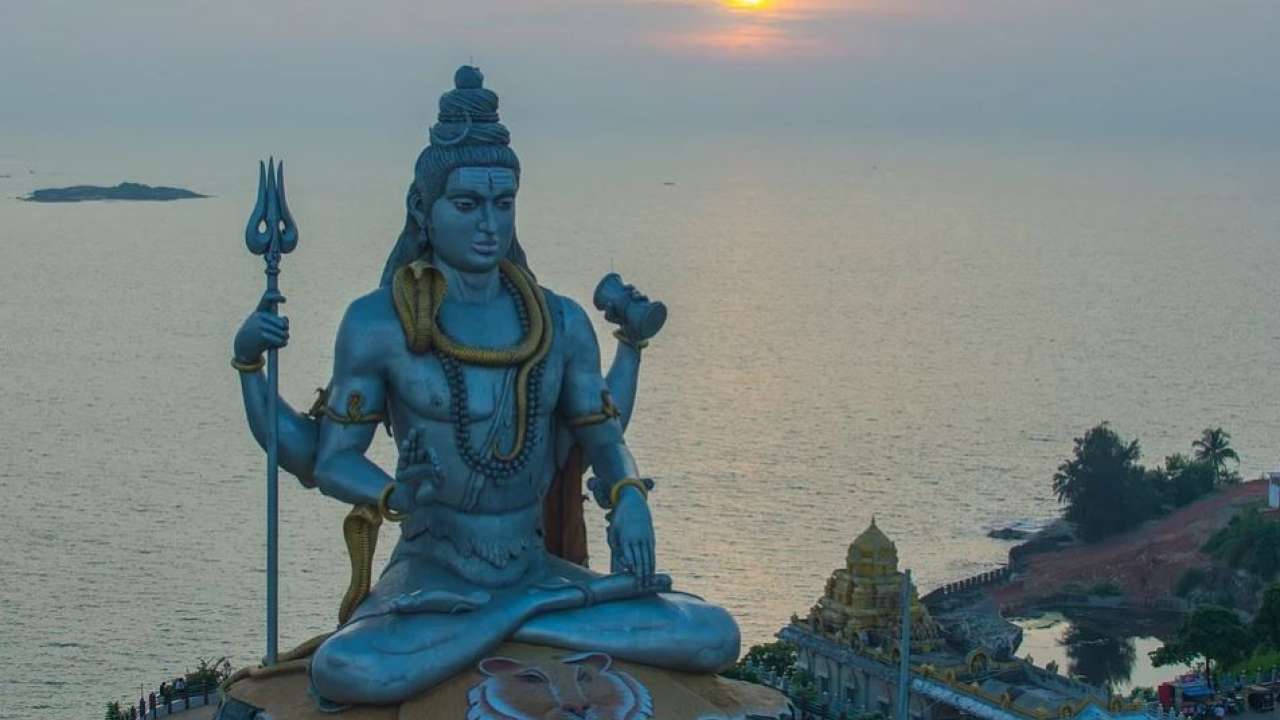Mahashivratri is an annual festival celebrated in the month of Magha of the Hindu lunar calendar, during the arrival of summer. The festival is dedicated to Lord Shiva where He is worshipped with fervor across India, Nepal, and other countries by the Hindu population. Devotees folk the Shiva temple and worship the Shivling, an iconic representation of Lord Shiva by performing Abhishek rituals. On this day and night, the aura is believed to be highly charged with spiritual vibes thus makes a very opportune time for indulging in spiritual activities and attracting the divine grace of Lord Shiva. Devotees observe full day fast and night-vigil and participate in activities like singing Bhajans, reciting hymns dedicated to Lord Shiva or listening to Shiva stories, reading scriptures, performing Shivling Abhishek, meditating, and more.
Interesting story about Mahashivratri Vrat
Legends state that once to bring amicability between the ever-fighting Devtas (Demi-Gods) and Asuras (Demons), Lord Vishnu suggested them to perform Samudra Manthan (churning of the ocean of milk) to retrieve the nectar of immortality. God and Demons both agreed to this and all celestial beings agreed to participate in this extensive process. Mount Mandara became the churning rod, Vasuki – King of Naga (serpent) agreed to be the churning rope and Lord Vishnu took the form of Kurma (tortoise) to support the powerful Mandara mountain.
When the churning began the first thing that emerged from the sea was the Halahal Vish which was a lethal poison that could destroy all the creation. All the Devtas and Asuras prayed to Lord Shiva for His help. Lord Shiva being ever compassionate consumed the Halahal Vish and saved the creation. However, Parvati-His divine consort got worried about the impact of the poison on Lord Shiva. So, She placed Her hand on His throat to prevent the poison from flowing down further. She did this for one entire day and night while fasting. The poison being held in the throat of Lord Shiva caused it to turn blue and He since then is referred to as the Neelkantha – the One with blue throat. And the vigil and fast which Goddess Parvati observed has been followed as a tradition since then by the devotees during the Mahashivratri.
How to perform Mahashivratri puja
mainly consists of Abhishek of Shivling and observing the whole day and night fast. Most of the devotees observe the whole night vigil and perform Mahashivratri puja. Throughout the day devotees also chant the Shiva Panchakshari mantra – Om Namah Shivay. Performing Mahashivratri puja is believed to attract the divine grace of Lord Shiva and bestow good health, prosperity, and spiritual growth. It helps relieve all suffering and absolve all sins.
Observing Vrat:
One must rise early and take bath and take a vow to observe Vrat for the entire day and night with complete devotion. One can partake in light meals consisting of milk, fruits, and dishes made of sago or Samo rice depending upon their choice. Some devotees observe Nirjal Vrat, where they abstain from taking any meal and drinking water. Fasting helps ready the mind and body to drive and focus the mind inwards and strengthen intentions.
Performing Shivling Abhishek:
The Mahashivratri puja is done by performing Shivling Abhishek in the home or Shiva temple. Place Shivling in such a position that the Yoni faces the north and the person performing the puja faces the west side of Lingam. Sit on a Wool or Kusha Aasan and apply tilak on the forehead. You may also smear Vibhuti as Tripund Tilak on the forehead and wear a mala made of Rudraksha beads.
Light incense sticks and decorates the puja altar with flowers. Light a ghee lamp and offer prayers to Lord Ganesh before the beginning of puja. Begin the puja by first offering water preferably mixed with Ganga Jal followed by various offerings like milk, rose water, fruit juices, and Panchamrit (mix of ghee, milk, sugar, honey, and milk). For those performing puja for four prahars of the night (four units), they must offer water in the first Prahar, curd during the second, ghee during the third, and honey during the fourth prahar.
Chant Panchakshari mantra while performing rituals of Abhishek. Also offer Bilva leaves or garland made of Bilva leaves and adorn the Shivling with flowers to Shivling Sandal paste or Ashtagandha. After completion of Shivling Abhishek, perform Aarti using a ghee lamp and offer fruits as Naivaidya to Lord Shiva. After the completion of Aarti, distribute the fruits as prasad and consume them. Conclude the Vrat (fast) by eating a regular meal after taking bath after the end of the Chaturdashi Tithi after the fourth prahar .
Mahashivratri is the night of awakening for devotees when one drives his awareness inward to churn and purify themselves of any negative thoughts, ignorance, and limiting beliefs and experience the natural state of tranquillity and divinity within.












